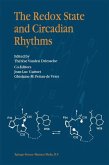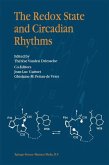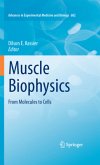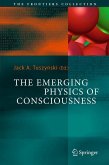The purpose of this volume is to provide historical and current information about the circadian clock, molecular properties of clock components and their roles in health and disease. The Circadian Clock aims to give an integrated view how the biochemistry and physiology of an organism is organized over the 24 hours of a day and how disturbance of clock function can lead to disease.
Outline:
- Historical overview
- Transcriptional Regulation of circadian clocks
- Non-Image Forming Photoreception
- Interplay Between Circadian Clocks and Metabolism
- Clocks, Cell Cycle and Cancer
- Circadian Neural Networks
- Circadian Neural Networks
- Circadian Clocks and Sleep
a) Clocks and Sleep in animals
b) Homeostatic and Circadian Regulation of Human Sleep
- Clocks, Brain Function and Dysfunction
- Systems Biology and Modeling of Circadian Rhythms
- Comparative Clocks.
With the invitation to edit this volume, I wanted to take the opportunity to assemble reviews on different aspects of circadian clocks and rhythms. Although most c- tributions in this volume focus on mammalian circadian clocks, the historical int- duction and comparative clocks section illustrate the importance of various other organisms in deciphering the mechanisms and principles of circadian biology. Circadian rhythms have been studied for centuries, but only recently, a mole- lar understanding of this process has emerged. This has taken research on circadian clocks from mystic phenomenology to a mechanistic level; chains of molecular events can describe phenomena with remarkable accuracy. Nevertheless, current models of the functioning of circadian clocks are still rudimentary. This is not due to the faultiness of discovered mechanisms, but due to the lack of undiscovered processes involved in contributing to circadian rhythmicity. We know for example, that the general circadian mechanism is not regulated equally in all tissues of m- mals. Hence, a lot still needs to be discovered to get a full understanding of cir- dian rhythms at the systems level. In this respect, technology has advanced at high speed in the last years and provided us with data illustrating the sheer complexity of regulation of physiological processes in organisms. To handle this information, computer aided integration of the results is of utmost importance in order to d- cover novel concepts that ultimately need to be tested experimentally.
Outline:
- Historical overview
- Transcriptional Regulation of circadian clocks
- Non-Image Forming Photoreception
- Interplay Between Circadian Clocks and Metabolism
- Clocks, Cell Cycle and Cancer
- Circadian Neural Networks
- Circadian Neural Networks
- Circadian Clocks and Sleep
a) Clocks and Sleep in animals
b) Homeostatic and Circadian Regulation of Human Sleep
- Clocks, Brain Function and Dysfunction
- Systems Biology and Modeling of Circadian Rhythms
- Comparative Clocks.
With the invitation to edit this volume, I wanted to take the opportunity to assemble reviews on different aspects of circadian clocks and rhythms. Although most c- tributions in this volume focus on mammalian circadian clocks, the historical int- duction and comparative clocks section illustrate the importance of various other organisms in deciphering the mechanisms and principles of circadian biology. Circadian rhythms have been studied for centuries, but only recently, a mole- lar understanding of this process has emerged. This has taken research on circadian clocks from mystic phenomenology to a mechanistic level; chains of molecular events can describe phenomena with remarkable accuracy. Nevertheless, current models of the functioning of circadian clocks are still rudimentary. This is not due to the faultiness of discovered mechanisms, but due to the lack of undiscovered processes involved in contributing to circadian rhythmicity. We know for example, that the general circadian mechanism is not regulated equally in all tissues of m- mals. Hence, a lot still needs to be discovered to get a full understanding of cir- dian rhythms at the systems level. In this respect, technology has advanced at high speed in the last years and provided us with data illustrating the sheer complexity of regulation of physiological processes in organisms. To handle this information, computer aided integration of the results is of utmost importance in order to d- cover novel concepts that ultimately need to be tested experimentally.








